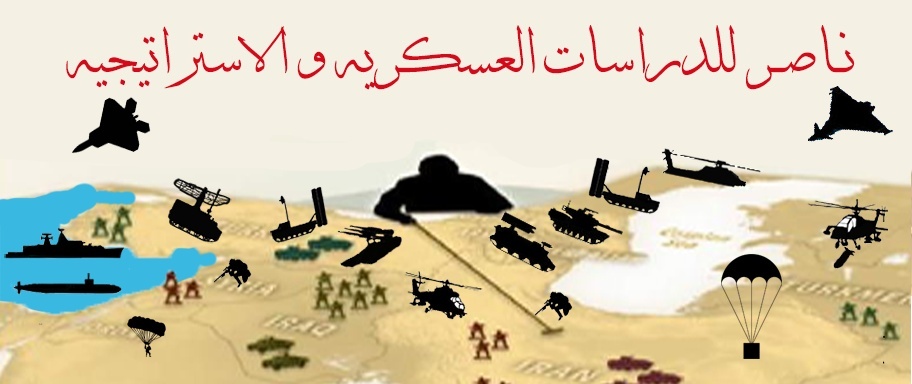مضلات الهبوط العسكرية
مركز ناصر للدراسات العسكرية و الاستراتيجية :: الأقسام العسكريّة :: أقسام القوات البرية :: اسلحة المشاة و الاسلحة الخفيفة
صفحة 1 من اصل 1
 مضلات الهبوط العسكرية
مضلات الهبوط العسكرية
بسم الله الرحمان الرحيم
مضلات الهبوط العسكرية
تاريخ المضلة
في القرن التاسع في الأندلس ، قام عباس بن فرناس بإختراع نسخة بدائية من مظلة الهبوط أو ما يطلق عليه الآن باراشوت (بالإنجليزية : Parachute). وصف جون لينهارد هذه المظلة في كتابه محركات إبداعنا كالآتي : "في عام 852 ، خليفة جديد وتجربة غريبة : شخص جرئ يدعي عباس بن فرناس قرر أن يطير من على برج في قرطبة. لقد حطّ ثانية على الأرض بإستخدام عباءة ضخمة على شكل أجنحة ليخفف من سقوطه. لقد أصيب بجروح طفيفة ، وكان ابن فرناس الشاب هناك لكي يري هذا."
Jean-Pierre Blanchard كان السباق في اختراع المضلة والمنطاد

Franz Reichelt اول رجل يقفز من برج ايفل بمضلة .التجربة لم تنجح فمات على الفور

في القرن التاسع في الأندلس ، قام عباس بن فرناس بإختراع نسخة بدائية من مظلة الهبوط أو ما يطلق عليه الآن باراشوت (بالإنجليزية : Parachute). وصف جون لينهارد هذه المظلة في كتابه محركات إبداعنا كالآتي : "في عام 852 ، خليفة جديد وتجربة غريبة : شخص جرئ يدعي عباس بن فرناس قرر أن يطير من على برج في قرطبة. لقد حطّ ثانية على الأرض بإستخدام عباءة ضخمة على شكل أجنحة ليخفف من سقوطه. لقد أصيب بجروح طفيفة ، وكان ابن فرناس الشاب هناك لكي يري هذا."
Jean-Pierre Blanchard كان السباق في اختراع المضلة والمنطاد

Franz Reichelt اول رجل يقفز من برج ايفل بمضلة .التجربة لم تنجح فمات على الفور


مواصفات المضلة الشراعية

مضلاات الشحن والعتاد
تستخدم في انزال الامتعة من مساعادات انسانية وعتاد حربي في المناطق التي يصعب على الطائرات النزول فيها
من احراش ومستنقعات وجبال ومناطق خطيرة بسبب الحروب والاوبئة .....

تستخدم في انزال الامتعة من مساعادات انسانية وعتاد حربي في المناطق التي يصعب على الطائرات النزول فيها
من احراش ومستنقعات وجبال ومناطق خطيرة بسبب الحروب والاوبئة .....



مضلة انزال الجنود





مضلات لانقاض الطائرات الصغيرة عند الاعطال


المضلات الرياضية

حوادث المضلات

المضلات الحديثة
The modern parachute was invented in the late 18th century byLouis-Sébastien Lenormand in France, who made the first recorded public jump in 1783. Lenormand also sketched it beforehand. Two years later, Jean-Pierre Blanchard demonstrated it as a means of safely disembarking from a hot air balloon. While Blanchard's first parachute demonstrations were conducted with a dog as the passenger, he later had the opportunity to try it himself in 1793 when his hot air balloon ruptured and he used a parachute to escape.
Subsequent development of the parachute focused on it becoming more compact. While the early parachutes were made of linen stretched over a wooden frame, in the late 1790s, Blanchard began making parachutes from folded silk, taking advantage of silk's strength and light weight. In 1797, André Garnerin made the first jump using such a parachute. Garnerin also invented the vented parachute, which improved the stability of the fall. In 1911, Gleb Kotelnikov invented the first knapsack parachute, later popularized by Paul Letteman and Kathchen Paulus.
At San Francisco in 1885, Thomas Scott Baldwin was the first person in the United States to descend from a balloon in a parachute. In 1911 Grant Morton made the first parachute jump from an airplane, in a Wright Model B, at Venice Beach, California. The pilot of the plane was Phil Parmalee. Morton's parachute was of the 'throw-out' type whereas he held the chute in his arms as he left the aircraft. On March 1, 1912, US Army Captain Albert Berry made the first parachute jump from a moving aircraft over Missouri using a 'pack' style chute. This is the style of chute that became en reg with the actual chute being stored or housed in a casing on the jumper's body. Štefan Banič from Slovakia invented the first actively used parachute, patenting it in 1913. On June 21, 1913Georgia Broadwick became the first woman to parachute jump from a moving aircraft over Los Angeles.
The first military use for the parachute was for use by artillery spotters on tethered observation balloons in World War I. These were tempting targets for enemy fighter aircraft, though difficult to destroy, due to their heavy antiaircraft defenses. Because they were difficult to escape from, and dangerous when on fire due to their hydrogen inflation, observers would abandon them and descend by parachute as soon as enemy aircraft were seen. The ground crew would then attempt to retrieve and deflate the balloon as quickly as possible. No parachutes were issued to Allied "heavier-than-air" aircrew. [8] As a result, a pilot's only options were to ride his machine into the ground, jump from several thousand feet, or commit suicide using a standard-issued revolver (though the last two cases were only commonly practised by those who did not wish to die by burning). In the UK, Everard Calthrop, a railway engineer, and breeder of Arab horses, invented and marketed through his Aerial Patents Company a "British Parachute". Thomas Orde-Lees, known as the Mad Major, demonstrated that parachutes could be used successfully from a low height (he jumped from the Tower Bridge in London) which led to their being used by the Royal Flying Corps.
The German air service, in 1918, became the world's first to introduce a standard parachute and the only one at the time. Despite Germany issuing their pilots with parachutes, their efficiency was relatively poor. As a result, many pilots died whilst using them, including aces such as Oberleutnant Erich Lowenhardt (who fell from 12,000 feet (3,700 m) after being accidentally rammed by a friendly) and Fritz Rumey (he tested it in 1918, only to have it fail from a little over 3,000 ft).
Tethered parachutes were initially tried but caused problems when the aircraft was spinning. In 1919 Leslie Irvin invented and successfully tested a parachute that the pilot could deploy when clear of the aircraft. He became the first person to make a premeditated free-fall parachute jump from an airplane[1].
An early brochure[2] of the Irvin Air Chute Company credits William O'Connor 24 August1920 at McCook Field near Dayton, Ohio as the first person to be saved by an Irvin parachute. Another life-saving jump was made at McCook Field by test pilot Lt. Harold H. Harris on Oct 20, 1922. Shortly after Harris' jump two Dayton newspaper reporters suggested the creation of the Caterpillar Club for successful parachute jumps from disabled aircraft. Beginning with Italy in 1927, several countries experimented with using parachutes to drop soldiers behind enemy lines, and by World War II large airborne forces were trained and used in surprise attacks, as in the 1941 Battle of Crete. Aircraft crew were routinely equipped with parachutes for emergencies as well



حت القنابل مزودة بمضلات

Subsequent development of the parachute focused on it becoming more compact. While the early parachutes were made of linen stretched over a wooden frame, in the late 1790s, Blanchard began making parachutes from folded silk, taking advantage of silk's strength and light weight. In 1797, André Garnerin made the first jump using such a parachute. Garnerin also invented the vented parachute, which improved the stability of the fall. In 1911, Gleb Kotelnikov invented the first knapsack parachute, later popularized by Paul Letteman and Kathchen Paulus.
At San Francisco in 1885, Thomas Scott Baldwin was the first person in the United States to descend from a balloon in a parachute. In 1911 Grant Morton made the first parachute jump from an airplane, in a Wright Model B, at Venice Beach, California. The pilot of the plane was Phil Parmalee. Morton's parachute was of the 'throw-out' type whereas he held the chute in his arms as he left the aircraft. On March 1, 1912, US Army Captain Albert Berry made the first parachute jump from a moving aircraft over Missouri using a 'pack' style chute. This is the style of chute that became en reg with the actual chute being stored or housed in a casing on the jumper's body. Štefan Banič from Slovakia invented the first actively used parachute, patenting it in 1913. On June 21, 1913Georgia Broadwick became the first woman to parachute jump from a moving aircraft over Los Angeles.
The first military use for the parachute was for use by artillery spotters on tethered observation balloons in World War I. These were tempting targets for enemy fighter aircraft, though difficult to destroy, due to their heavy antiaircraft defenses. Because they were difficult to escape from, and dangerous when on fire due to their hydrogen inflation, observers would abandon them and descend by parachute as soon as enemy aircraft were seen. The ground crew would then attempt to retrieve and deflate the balloon as quickly as possible. No parachutes were issued to Allied "heavier-than-air" aircrew. [8] As a result, a pilot's only options were to ride his machine into the ground, jump from several thousand feet, or commit suicide using a standard-issued revolver (though the last two cases were only commonly practised by those who did not wish to die by burning). In the UK, Everard Calthrop, a railway engineer, and breeder of Arab horses, invented and marketed through his Aerial Patents Company a "British Parachute". Thomas Orde-Lees, known as the Mad Major, demonstrated that parachutes could be used successfully from a low height (he jumped from the Tower Bridge in London) which led to their being used by the Royal Flying Corps.
The German air service, in 1918, became the world's first to introduce a standard parachute and the only one at the time. Despite Germany issuing their pilots with parachutes, their efficiency was relatively poor. As a result, many pilots died whilst using them, including aces such as Oberleutnant Erich Lowenhardt (who fell from 12,000 feet (3,700 m) after being accidentally rammed by a friendly) and Fritz Rumey (he tested it in 1918, only to have it fail from a little over 3,000 ft).
Tethered parachutes were initially tried but caused problems when the aircraft was spinning. In 1919 Leslie Irvin invented and successfully tested a parachute that the pilot could deploy when clear of the aircraft. He became the first person to make a premeditated free-fall parachute jump from an airplane[1].
An early brochure[2] of the Irvin Air Chute Company credits William O'Connor 24 August1920 at McCook Field near Dayton, Ohio as the first person to be saved by an Irvin parachute. Another life-saving jump was made at McCook Field by test pilot Lt. Harold H. Harris on Oct 20, 1922. Shortly after Harris' jump two Dayton newspaper reporters suggested the creation of the Caterpillar Club for successful parachute jumps from disabled aircraft. Beginning with Italy in 1927, several countries experimented with using parachutes to drop soldiers behind enemy lines, and by World War II large airborne forces were trained and used in surprise attacks, as in the 1941 Battle of Crete. Aircraft crew were routinely equipped with parachutes for emergencies as well



حت القنابل مزودة بمضلات

مركز ناصر للدراسات العسكرية و الاستراتيجية :: الأقسام العسكريّة :: أقسام القوات البرية :: اسلحة المشاة و الاسلحة الخفيفة
صفحة 1 من اصل 1
صلاحيات هذا المنتدى:
لاتستطيع الرد على المواضيع في هذا المنتدى


 [/img]
[/img]
